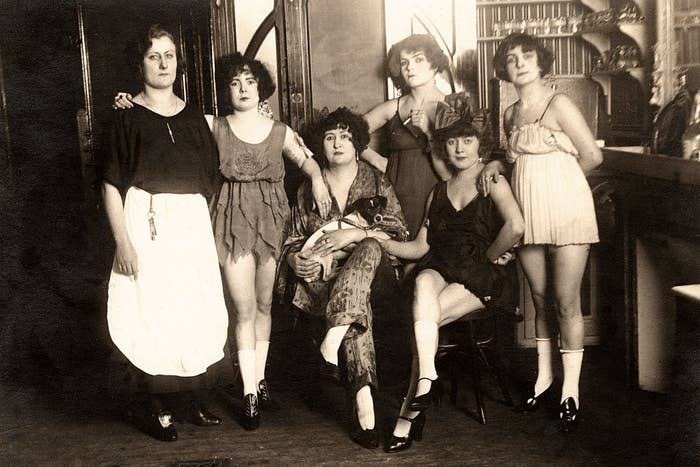The Surprising Choice: Why Some Men Preferred Syphilis in 1916
Written on
Chapter 1: The Dark Allure of Illness
Imagine the dread of a simple cough signaling doom a century ago. During that time, many infections were untreatable, leading to prolonged suffering that often felt worse than death itself. Under certain dire circumstances, however, one might have considered embracing syphilis as a means of survival.
King Louis XIV of France, like many monarchs, began to lose his hair at a young age. In a panic over his vanity, he commissioned 48 wig makers to create wigs that mimicked his fading hairline. As his hair loss accelerated—likely due to syphilis—wigs became a luxury item, leading to the term "bigwig," highlighting the disparity between the wealthy and the working class.
Eventually, society recognized that syphilis spread through sexual contact, leading to significant social ramifications:

To conceal symptoms became paramount. In an era rife with religious fervor and moral scrutiny, visible signs of the disease marked one as immoral, relegating them to the status of a social outcast. The hypocrisy was palpable; many who condemned the afflicted were frequent patrons of bars and brothels.
Throughout history, syphilis bore various names, often steeped in nationalism and xenophobia. Italians dubbed it "The French Disease," while Germans called it the "Italian disease," and the Turks labeled it the "Christian disease." These terms reflected a society keen on preserving its own virtue while casting blame on others.
As World War I erupted, the bloodshed was unprecedented, even by wartime standards. The military's rapid industrialization unveiled brutal new weaponry—gone were the days of muskets and slow reloads, replaced by machine guns and chemical warfare.
In one notable incident, American troops utilized shotguns, nicknamed "trench brooms," for their effectiveness in close combat, while German forces condemned their use as barbaric, despite employing flamethrowers themselves. The proximity of enemy forces led to a bizarre exchange of insults, so loud that commanders eventually banned it.
As news of the devastation in the trenches spread, soldiers often prepared for their final farewells upon being deployed.
Chapter 2: The Brothel Economy and Disease
During the war, cities in Europe saw an influx of male soldiers, leading to a surge in prostitution. This phenomenon was particularly evident in France:

Syphilis was already rampant before the conflict, and the rise in sex work only exacerbated the situation, with women often bearing the brunt of the blame. This led to significant concerns within military circles, as the close quarters of the trenches facilitated the swift transmission of diseases.
Notably, many military leaders had personal experiences with syphilis, knowing individuals who had succumbed to it. In a shocking twist, prostitutes began to charge extra for encounters if they had syphilis, as soldiers were willing to pay a premium for the chance to be excused from the trenches.
The gamble of contracting syphilis was a calculated risk. The disease could take anywhere from one to twenty years to prove fatal, causing severe physical decay and mental deterioration along the way. While some treatments offered a slim chance of success, they often proved deadly themselves, with historical practices including bloodletting and mercury injections.
Dr. Wagner Jauregg explored malaria infection as a treatment, with surprising results—sometimes it worked, but it was akin to playing medical Russian Roulette. Many perished, yet some experienced a high fever that could expel the syphilis.
Even today, high fevers are utilized in treating other chronic diseases, illustrating the lengths to which medicine can go, often pushing the body to the brink of death to eradicate illness.
The journey for syphilis-infected soldiers would be long until the advent of penicillin in 1945. Facing one of history's cruelest conflicts, their perspectives undoubtedly shifted. In the grand scheme, every dilemma becomes relative, and every choice is a trade-off.
This first video delves into the historical context of syphilis, showcasing its impact and the societal responses to the disease during its peak.
The second video uncovers the true origins of syphilis, exploring its cultural significance and historical implications in a broader narrative.